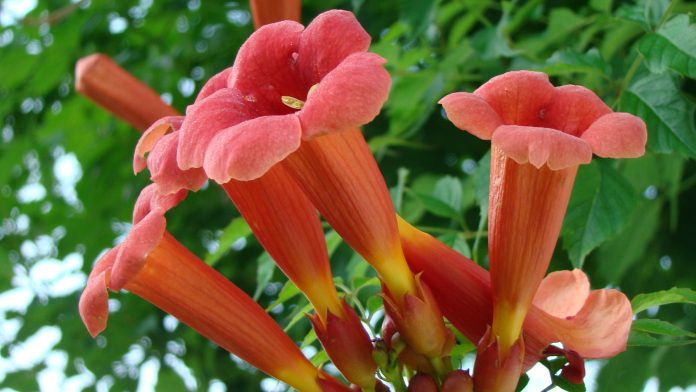Bromeliad fascinating plants are among the most exotic houseplants a gardener can grow and among the easiest. Not a genus in themselves, but a large group of genera, they include Aechmea, Billbergia, Cryptanthus, Dyckia, Guzmania, Neoregelia, Nidularium, Tillandsia, and several others. Bromeliads come from the jungles of South America.
Some are terrestrial, but many are air plants (epiphytes) living high up in the trees without any soil and taking nourishment only from whatever organic matter washes their way. They are not parasitic and do not draw nourishment from the trees themselves. Tree-growing bromeliads catch rainwater in cup-like urns of leaves.
Bromeliads are grown mainly for their spectacular flowers, but the leaves are often particularly handsome too. A typical bromeliad has a rosette of leaves, sometimes soft and green, sometimes stiff and spiky, with variegated markings. A flower stalk usually emerges from the center of the rosette. The showiness of these flowers really lies in the brilliantly colored bracts that surround them, though the tinier flowers are also beautiful.
A plant blooms only once, but the flower is often extraordinarily long-lasting, and bromeliad plants readily produce offshoots. You may remove these from the mother plant and report them, or you may cut out the spent mother plant and let the cluster of new ones bloom together.
If you are looking for a bromeliad to start with, try Aechmea fasciata. You might find it marketed under various names, such as “urn plant” or “silver vase,” but you will recognize it by its vase of stiff, tooth-edged green leaves, marked horizontally with silver bands. The flower spike has toothed bracts of bright pink color; little blue-purple flowers nestle among the pink spikes.
Best of all, this colorful spectacle lasts about six months. The plant grows 1 to 2 feet tall. Another gorgeous long-blooming bromeliad is Guzmania lingulata, which is about the same size, with long green, strap-like leaves sometimes striped with purple and a red-orange cluster of bracts enclosing white flowers from late winter or summer. Bromeliads with stiff, variegated leaves like good, bright light and often will take some direct sun, but don’t expose them to strong midday sun in summer; those with softer, green leaves are fairly shaded tolerant.
They do well under artificial lights. They are happiest in warm rooms at 65–75 degrees at night, even lower than Aechmea fasciata. Give them humid air and a very light, porous organic soil or soilless mix. Remember that May bromeliads are air plants, and their roots don’t normally grow in soil. Some gardeners grow the ephiphytic types on pieces of tree branches wrapped in moistened sphagnum moss, but a shallow clay pot will do fine.
You can allow the top inch or so of the pot to dry out between waterings (overwatering can lead to fungus diseases), but always keep the cup inside the leaves filled with water. Feed lightly a balanced liquid fertilizer at half the suggested strength added to the soil, and a cup once a month in spring and summer is about right. Propagate by dividing offsets with a knife and re-potting them.
Also Read: How to Grow Gorgeous Cyclamen Flower







